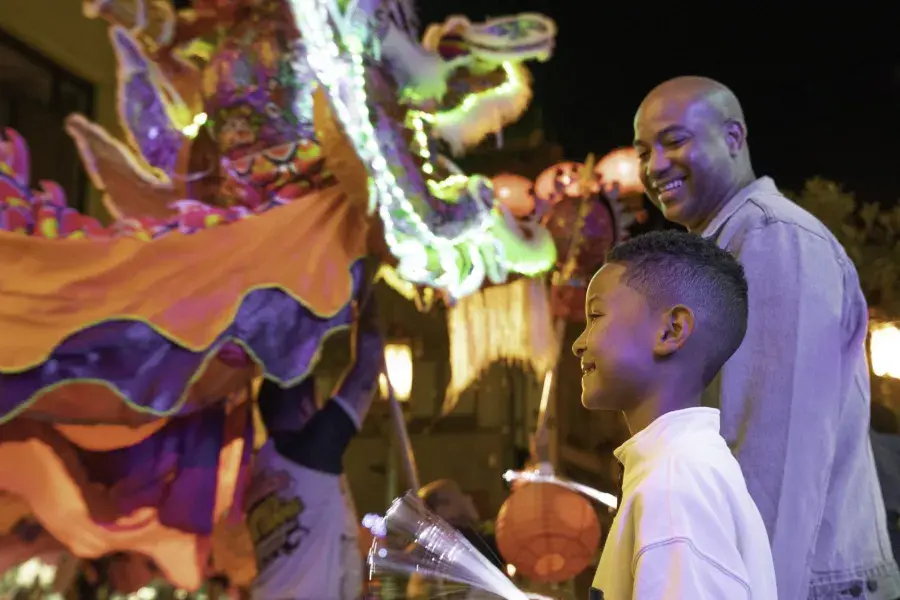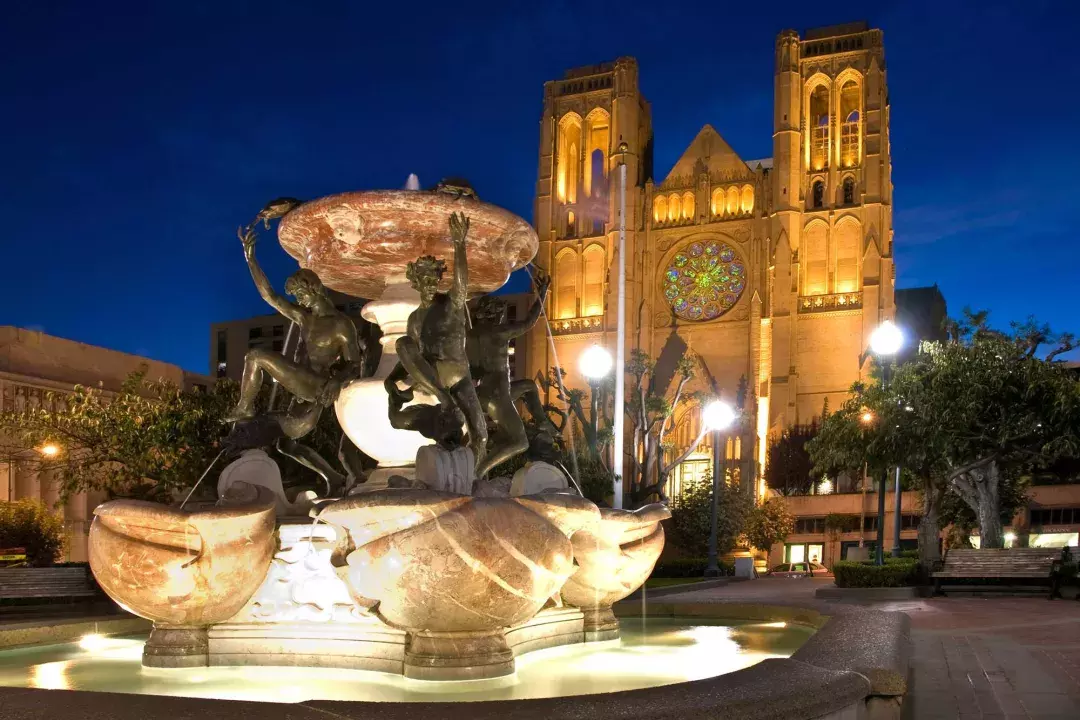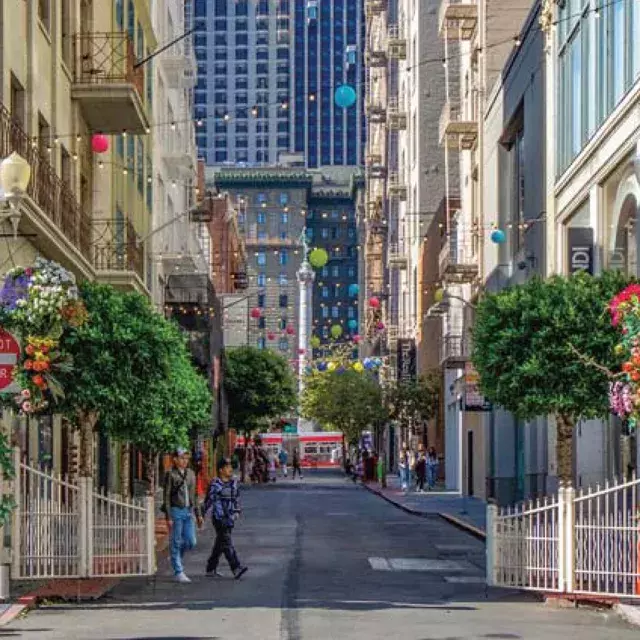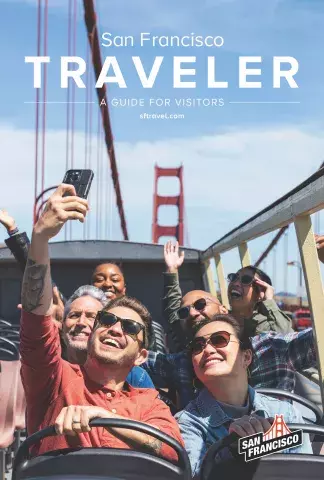
Dr. Martin Luther King, Jr.'s Living Legacy in San Francisco and the Bay Area
Visit these places in San Francisco and across the Bay Area to get in touch with the historic impact of Dr. King.
Although the Bay Area played a major role in the civil rights movement of the 1950s and 60s, many people don’t associate this part of the country with the legacy of Dr. Martin Luther King Jr. But “America’s Prophet” not only spent his summers as a teenager at his cousin's home in San Francisco’s Western Addition neighborhood, but several of the most important moments in Dr. King’s divinely inspired campaign to transform modern society into a “Beloved Community” took place here.
As a city that has always been at the forefront of cultural change and known for its tradition of acceptance and commitment to equality, San Francisco honors Dr. King’s vision on many levels. Artists and activists across the Bay Area have continued to pursue his dream, and San Francisco has proudly counted among its residents celebrated poet Maya Angelou, civil rights leader Carlton B. Goodlett, and even the first self-made Black millionaire, Mary Ellen Peasant.
To dig deeper into Dr. Martin Luther King Jr.’s legacy in the Bay Area, check out these sites.
The Bill Graham Civic Auditorium
99 Grove St.
Dr. King moved from small town preacher into the national spotlight when he was elected president of the Montgomery Improvement Association (MIA). This organization was formed to support and expand the bus boycotts across the southern United States, sparked by Rosa Parks’s refusal to give up her seat to a white man in 1955.
Just six months later, King came to San Francisco to speak at the annual convention of the National Association for the Advancement of Colored People (NAACP) at the Civic Auditorium. After hearing from Dr. King, the NAACP decided to back the boycotts and lawsuits with their legal defense fund; and in December 1956, the Supreme Court issued the landmark ruling that segregation on buses violated the 14th Amendment.
Now named after famous Bay Area music promoter Bill Graham, this stately auditorium sits in the heart of Civic Center, kitty-corner from San Francisco’s majestic City Hall and the Asian Art Museum, which holds the country’s largest collection of artifacts from the Far East. Built in 1915 as part of the Panama-Pacific International Exposition, the Bill Graham Auditorium still hosts many of San Francisco’s top concerts and events. You can reach it easily by taking BART, Muni Metro, or the historic F Line streetcar to Civic Center.
- Read key passages from Dr. King's Civic Auditorium speech.
The Cow Palace
2600 Geneva Ave., Daly City
In 1964, the same year that Dr. King was awarded the Nobel Peace Prize, the now internationally famous civil rights leader came to San Francisco on a mission. He traveled here for the Republican Party’s presidential nominating convention, which took place at the Cow Palace. Also present was Jackie Robinson, the first black baseball player to play in Major League Baseball, breaking decades of segregation in the sport.
The revolutionary duo attended the convention to garner support for the new Civil Rights Act introduced by President John F. Kennedy the year before. After Kennedy’s assassination, the Act remained in limbo. Dr. King and Robinson failed to convince the Republican leadership to support the Act; but they saw success later that same year, when Democrat Lyndon B. Johnson won the presidency and Congress passed the historic legislation into law.
A large indoor arena located in Daly City, just south of San Francisco, the Cow Palace was built in 1941. It has played host to a wide range of different sporting events, business conventions, circuses, music concerts, and holiday events over its history. You can get there aboard the 9 Muni bus.
Grace Cathedral
1100 Sacramento St.
In 1965, Dr. King returned to San Francisco. This time it was not to push for a particular cause or legislation, but to commemorate the opening of the city’s most iconic church, Grace Cathedral, after 40 years of construction.
In the consecration speech, Dr. King took the opportunity to lay down the key points of his deeper spiritual perspective in which all humanity is interconnected and tied to a “single garment of destiny”. Almost five thousand people were packed into the newly constructed building to hear him speak that day.
Perched on the top of Nob Hill, Grace Cathedral is a French Gothic masterpiece complete with two labyrinths, elaborate stained-glass, and gold-plated doors modeled after the “Doors of Paradise” of the Duomo in Florence, Italy. This functioning Episcopal Church also offers a robust cultural calendar, and has hosted everyone from Duke Ellington to Art Garfunkel, who recorded an album here. It is also home to the Keith Haring AIDS Memorial, a powerful testament to lives lost in a different pandemic. You can get to Grace Cathedral by riding the California Street cable car.
- This speech features Dr. King at his prophetic best and is partially available for viewing.
Stanford and UC Berkeley
Tapping the rise in support for both the civil rights movement and anti-war sentiments among students across the nation—and particularly in the Bay Area—Dr. King visited again in 1967. Speaking in packed auditoriums at both Stanford and UC Berkeley, King laid out his radical vision for “Genuine Equality”, which would eradicate poverty and hunger in America, and also expressed what many of the time considered to be controversial views about the United States' role in the Vietnam War.
Stanford
450 Jane Stanford Way, Stanford
Stanford University is in the town of Palo Alto, some 20 minutes south of San Francisco. The gorgeous campus, which was designed by architect Fredrick Law Olmsted, is home to the Martin Luther King Jr. Research and Education Institute. Here, you can browse the “King Papers”, an extensive collection of documents related to Dr. King, including the original “I Have a Dream” speech. You can get to Stanford by taking CalTrain to the Palo Alto Transit Center.
UC Berkeley
110 Sproul Hall, Berkeley
Located just across the bay from San Francisco, UC Berkeley is the founding campus of the UC system and is widely regarded as one of the top public universities in the country. Visitors to the verdant, sprawling, and historic campus should stop by and check out the Martin Luther King Jr. Building, which was originally constructed in 1961 by architect Vernon DeMars. To get to UC Berkeley, ride BART to the Downtown Berkeley station.
Where Else the Legacy Lives On
While Dr. King may have never visited some of these other locations, they are nevertheless imbued with this memory.
The Martin Luther King, Jr. Memorial at Yerba Buena Gardens
750 Howard St.
Visitors should not miss the memorial waterfall that enshrines some of Dr. King’s most inspiring quotes at Yerba Buena Gardens, which is also the planned future site of the Norcal MLK Social Justice Center and Gallery. Built in 1993 and designed by sculptor Houston Conwill, along with poet Estella Majoza and architect Joseph De Pace, it’s the second largest memorial to Martin Luther King Jr. in the country.
Titled “Revelation”, the memorial also features a garden above the waterfall, where plants from all of San Francisco’s sister cities around the world are grown. Inside the waterfall, which flows into a 120,000-gallon reflecting pool, the sounds of the city slip away and leave you in a spirit of contemplation.
Every year on January 15, San Francisco hosts a march from the CalTrain station at Fourth and Bryant streets to Yerba Buena Gardens, where an interfaith coalition of spiritual leaders commemorate King’s birthday. The Glide Ensemble, a jazz band-backed gospel choir from San Francisco’s most iconic church, fills the air with the sounds of celebration.
You can get to the memorial by taking BART or Muni Metro to the Powell Street station and walking a few blocks south.
The Martin Luther King Jr. Freedom Center
12500 Campus Dr., Building D, Room 187, Oakland
Founded in 1995 by Oakland community organizers under the leadership of civil rights activist Ira Jinkins, The Martin Luther King Jr. Freedom Center is now an important part of the Bay Area social justice landscape. Now partnering with several East Bay community colleges, the Center spearheads educational and community-led initiatives that aim to uplift the most vulnerable high-poverty communities in Northern California.
The Church for the Fellowship of All Peoples
201 Larkin St.
One of the greatest influences in Martin Luther King Jr.’s development was mystic, preacher, and civil rights leader Howard Thurman. Not only did Dr. King attend several of Thurman’s talks while the latter was a professor of Theology at Boston College, but Dr. King reportedly found inspiration for the nonviolent resistance of the Montgomery Bus Boycotts in Thurman’s justice-infused take on Christianity.
Thurman, who had met with Ghandi in India to discuss both the principles of India’s struggle for independence and how Black Americans could employ the same strategies, moved to San Francisco in 1944. He established The Church for the Fellowship of All Peoples, which aspired to create an interracial, intercultural, and all-inclusive spiritual community. While Thurman passed in 1981, his Russian Hill church and a lively congregation lives on.
The church is a short walk from Muni bus stops and the Powell-Hyde cable car.

A Walk Through San Francisco's Black History
Follow this self-guided itinerary to see sights around the city associated with key moments in Black history and the Black men and women who shaped San Francisco.












